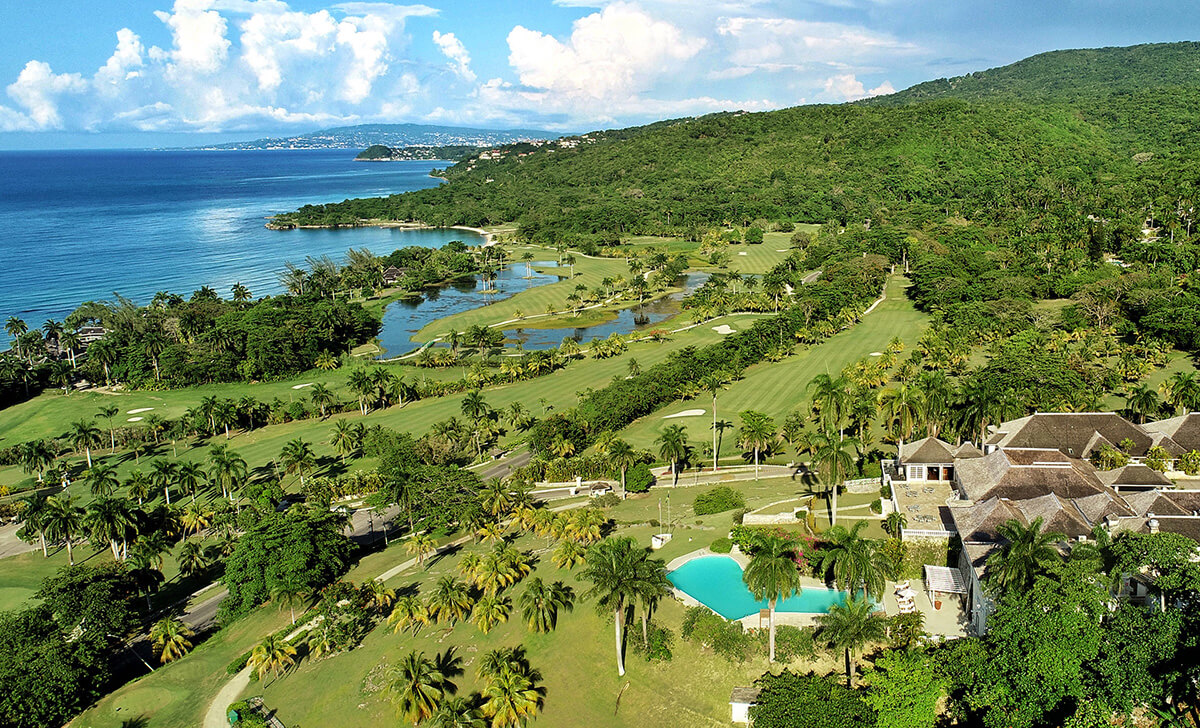(October 13, 2023) – Hanover, Jamaica – The spectacular Tryall Club in Hanover, just outside Montego Bay, has long been regarded as the best course in Jamaica and will once again get the chance to showcase its allure when it hosts the 56th Jamaica Open Golf Championship from October 29-31.
Designed in 1958 by the renowned Texan golf course architect Ralph Plummer, Tryall Club combines the island’s hilly terrain with other natural elements for a unique golfing experience.
The course has a storied history having hosted numerous international tournaments, including the Johnnie Walker World Golf Championship between 1991-1995. Winners included Fred Couples (1991 and 1995), Nick Faldo (1992) and Ernie Els (1994). In 2005, Tryall Club was voted the Best Golf Course in the Caribbean-by-Caribbean World Magazine.

Located off Sandy Bay on the western tip of Jamaica on near-mountainous land that has superb views over the ocean, Tryall was laid out by Plummer in the breach of the trade winds. While the course is a delight to the eye, it requires a great deal of thought by the player.
For Jodi Munn-Barrow, President of the Jamaica Golf Association, Tryall’s biggest drawcard is that it offers golfers the best of both worlds.
“It gives you the seaside aspect and then it takes you up into the mountains for a little bit and it gives you the mountain aspect,” said Munn-Barrow. “So, you’re not on this flat course inundated completely by wind and being totally rubbished by the wind! It allows you to think as well.

“For me, a golf course should not be an automatic course where you just think: okay, driver, wedge, or driver, five-iron. It shouldn’t be like that. Tryall makes you think. You can’t just stand up on a tee shot and say, ‘Okay, I’m going to blast this one 350 yards.’ Whenever I play at Tryall, I need to think because I have the wind, I have a layout with gullies and with bunkers. That’s what I love about Tryall. You always have to think to get it around Tryall.”
For Ewan Peebles, the Director of Golf at Tryall Club, the diversity of the course marks it out as something special.
“There are no two holes here even remotely alike,” said Peebles. “There is significant elevation change. On the third green, you’re probably six feet above sea level but when you get up to the 12th tee or 13th green, you’re 300 feet above sea level. It’s just a brilliant piece of land to build a golf course on and so many of the holes just fit the lie of the land very, very well. The original routing hasn’t changed much at all since the early 1960s. That’s testament to the original architect, Ralph Plummer. He wasn’t a globally renowned name but this is such a great piece of property to build a golf course on with all the different types of trees and foliage and flower and fauna that we have here. It has stood the test of time.”

Tryall Club received a major makeover to prepare it for the Johnnie Walker World Championship, a lucrative end-of-season tournament which attracted top-class fields to the island during the early 1990s. The basic character of Plummer’s design was retained but many of the low-lying holes along the Caribbean shore were toughened up with the addition of water hazards.
For the 1992 Johnnie Walker Championship, a fourth hole was added in vintage Plummer style with sea on the left, the Flint River just in front of the green and, almost invariably, a tricky breeze to handle off the ocean.
The most unusual hole on the course is the uphill seventh, which incorporates the aqueduct that supplied the sugar plantation’s waterwheel. The drive here is made through the aqueduct’s stone arches and, with the challenge of the wind ever present, concentration is at a premium on this hole.
“Tryall has always been open to hosting big events and I think it’s very appropriate that the Jamaica Open Golf Championship is once again back at Tryall,” said Munn-Barrow. “To me, it is the championship golf course in Jamaica. The other courses are excellent as well but I think the layout of Tryall, etc., makes it at the top and then Half Moon is probably the next level of championship course.”
The picturesque 18-hole, 6,836-yard course at Tryall Club offers a challenging and memorable experience for golfers of all skill levels. The undulating terrain is studded with strategically placed bunkers, rolling fairways and demanding greens while there are spectacular views of the Caribbean Sea to be enjoyed throughout the round.
Plummer worked on more than 100 courses during his 40-year career, but Tryall is unquestionably one of his finest creations. He added in features where there were none, without creating clutter. He worked with the terrain, locating holes across the gently rolling hills in stark contrast to the flatter holes on the front nine. Water features, bunkering and crosswinds all give the player more food for thought.
For Peebles, the breathtaking beauty of Tryall and the ever-changing conditions around the course combine to make rounds of golf here an unforgettable experience.
“It’s a golf course that you can play every day for a long period of time and not get bored because of the nature of the trade winds and the elements and the elevation changes,” he said. “It’s constantly evolving and providing a slightly different challenge. It’s a golf course that is playable for most.
“But it’s also a golf course that a lot of better players look at initially, they look at the scorecard and think it’s going to be a cake walk, and then when they find out that it’s not, it’s almost addictive to them. They think, ‘Well, I’ve got to come back and set the record straight here. I’ve got to do better.’ There are fine margins between scoring well here and not scoring well at all, very small margins. The first 13 holes are high-caliber golf holes and very, very gettable. But the last five holes are all par-4s and they are all demanding holes. There are some elevation changes, some swirling winds and a bunch of other things going on. A number of players at the Jamaica Open who have got it to five, six, seven or even eight under after 13 holes don’t break par on those last five holes. ”
The most recent winner of the Jamaica Open is American professional Patrick Cover. He won the tournament in 2022 for the second time, having previously finished top in 2019, the first year at Tryall Club. This year’s winner will receive $20,000 while the overall purse is over $100,000.
Already entries have been received from the United States, Canada, Australia, the Caribbean, and of course, the host country. To enter the tournament, please visit jgagolfstore.com/56th-ja-open.
Aqua Bay Resort returns as presenting sponsor for the fourth consecutive year. The tournament serves to showcase its vast potential and the beauty of Jamaica and is also sponsored by the Jamaica Tourist Board and the Tourism Enhancement Fund, Digicel Business, and the Grand Palladium Hotel.
Several other clubs have hosted the Jamaica Open Golf Championship since its inception in 1953. These include the Constant Spring Golf Club in Kingston (Jamaica’s capital), Caymanas Golf Club in the parish of St. Catherine, and Half Moon Golf Course in Montego Bay at the western end of the island.







